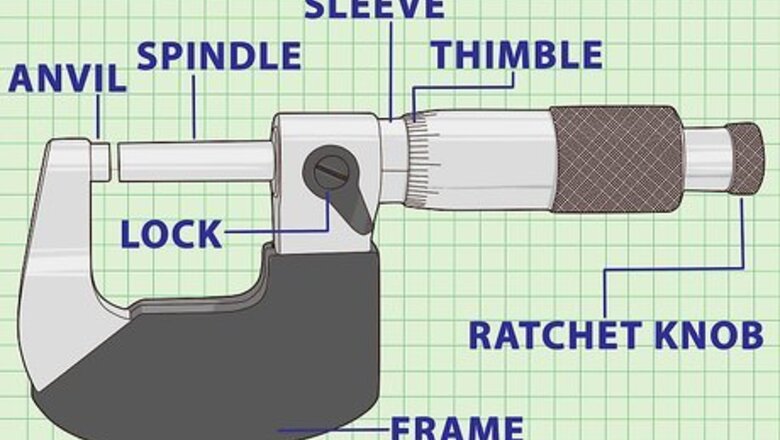
views
Measuring with the Micrometer
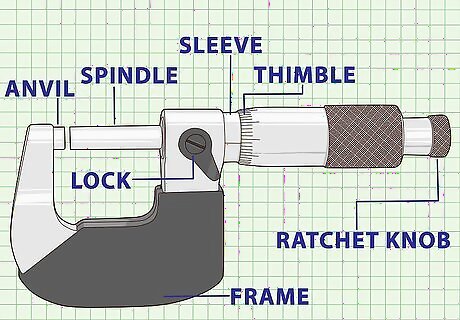
Familiarize yourself with the anatomy of a micrometer. Some parts are stationary while others are movable. Ratchet stop Thimble Frame Thimble lock Spindle Anvil Sleeve
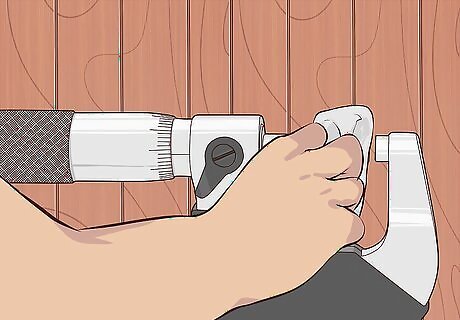
Clean the anvil and spindle before beginning. Use either a clean sheet of paper or soft cloth, and hold it between the anvil and the spindle. Gently twist and close on the sheet or cloth. Slowly, pull out the sheet or the cloth. This practice isn't a necessary step for measuring, but keeping the surfaces of the anvil and spindle clean ensures precise measurements.
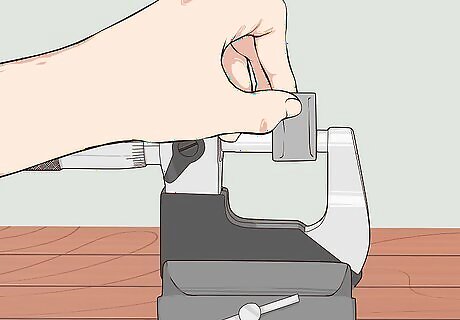
Hold the object in your left hand and place it against the anvil. The anvil is stationary and can withstand more pressure than the spindle. Make sure the object doesn't move or scratch the surface of the anvil.
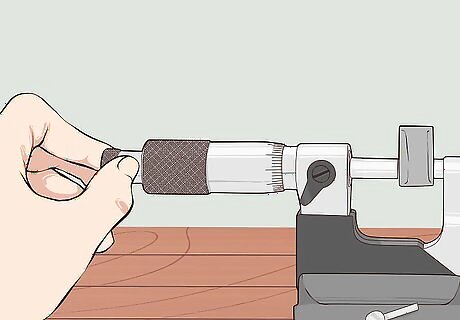
Hold the micrometer with your right hand. The frame will rest gently on your palm. You can also fasten the frame on a stationary vise; this helps free up both hands for the measuring process.
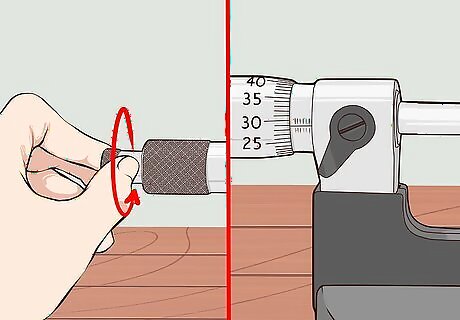
Spin the ratchet counter clockwise. Be sure the 0 on the thimble is lined up with the scale on the sleeve.
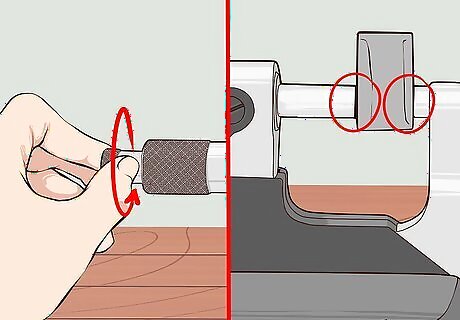
Twist until the spindle is against the object. Apply enough force. The thimble often clicks. Three clicks is a good stopping point.
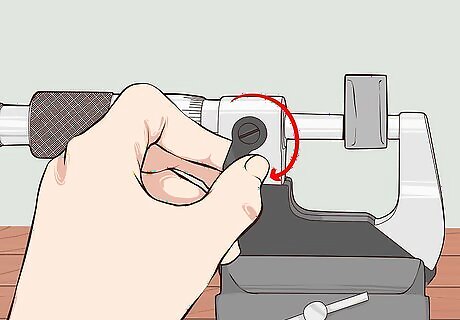
Set the thimble lock while the micrometer is still on the object. Even though it is on lock, the spindle can still be moved.
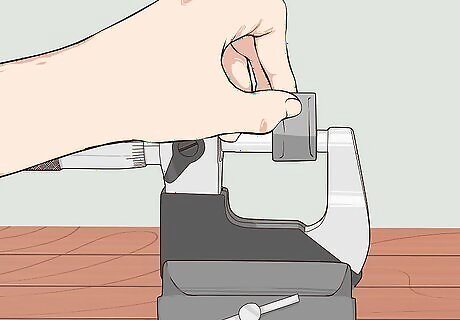
Slide out the object carefully. Be sure to avoid scratching either surfaces of the anvil or spindle; the slightest scratch can ruin the micrometers measuring accuracy.
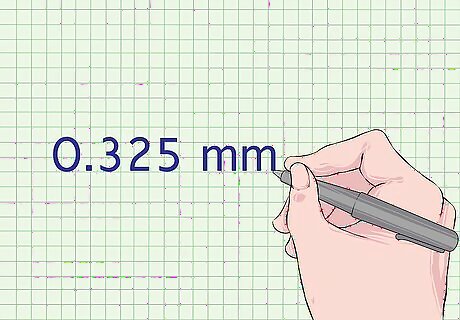
Write down the measurements before unlocking the spindle. If the spindle loosens, be sure to remeasure.
Reading an Inch Micrometer
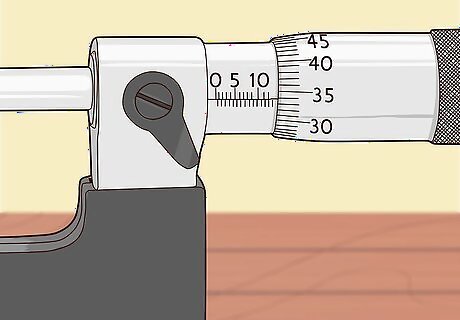
Learn the different number scales on the thimbles. On the sleeve is a scale that measures by the one-hundred thousands or 1/10 of an inch; in decimal form it would be .100. In between those whole numbers are three lines that represent twenty-five thousandths of an inch; in decimal form, it would look like .025. The thimble has evenly spaced lines that represent one-thousandth of an inch; in decimal form it would be .001. Above the whole number scale on the sleeve are lines that measure to ten-thousandths of an inch; in decimal form it looks like .0001.
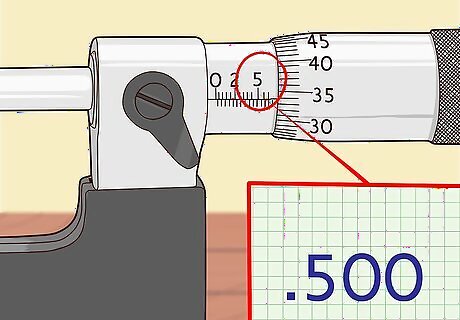
Read the whole number on the sleeve first. The last visible number will read as the thousandths. For example, if the last number you can see on the sleeve is 5, then it would read 500 thousandths, or .00005.
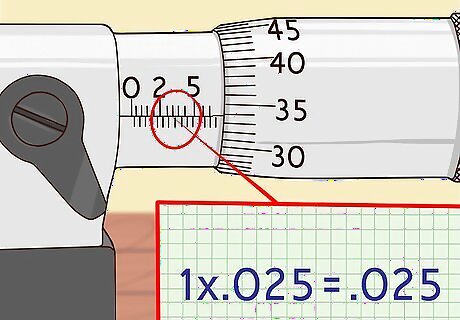
Read how many lines come after the whole number. Look at the individual markings exposed next to the 100 thousandths and multiply each marking by .25.. In this case 1 x .025 would be .025.
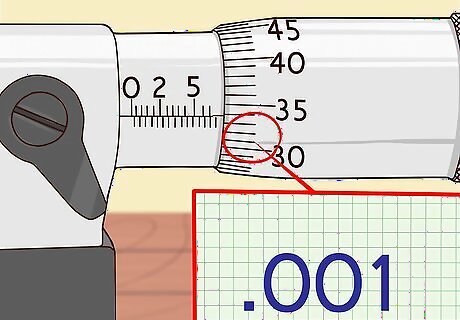
Find the number and corresponding marking on the thimble scale closest to but underneath the measurement line on the stock. If it's closest to 1, then it would be .001.
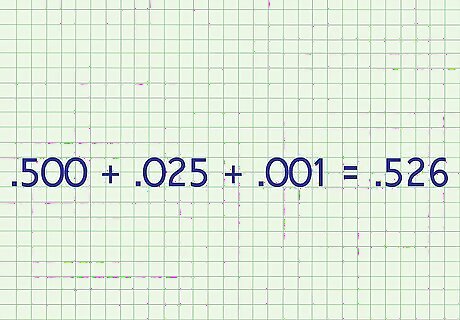
Add those three numbers together. In this case it would be .500 + .025 + .001 = .526.
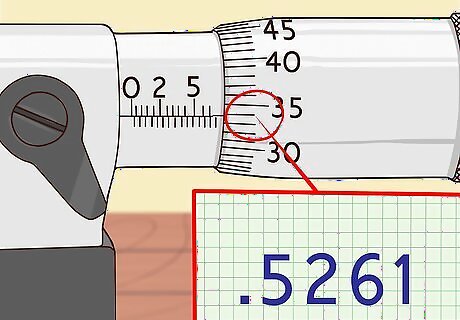
Flip the micrometer over to read to the 10 thousandths marking. Read that line that lines closest with the sleeve. If, for example, it lines with 1, then the measurement will will read .5261
Reading a Metric Micrometer
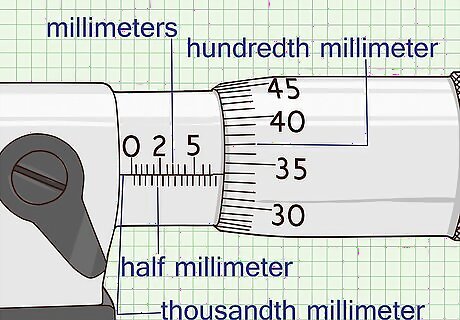
Learn the different number scales on the thimbles. The line on the sleeve usually has top line showing millimeters, and below that line the marks represent half millimeters. The marks on the thimble usually go to 50, and each line represents a hundredth of a millimeter or .01 mm. The horizontal lines above the scale on the sleeve will measure to the thousandth of a millimeter, or .001 mm.
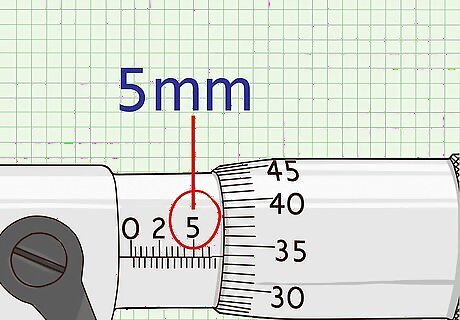
Read the number of millimeters first. If the last line you saw were a 5, then you would have 5 mm thus far.
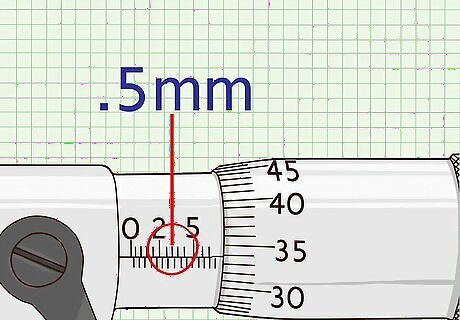
Incorporate all the half millimeters in your measurement. If you have one mark that would be .5 mm. Don't count a mark that is barely showing; the reading on the thimble might be getting close to 50.
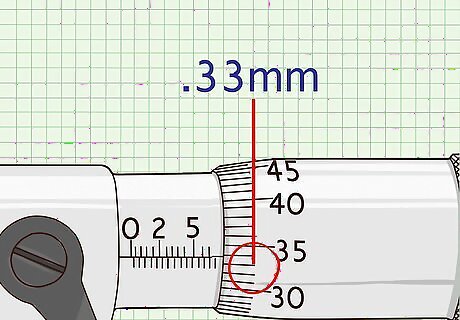
Find the number of .01 millimeters. If the line on the thimble reads 33, then you'd have .33 mm.
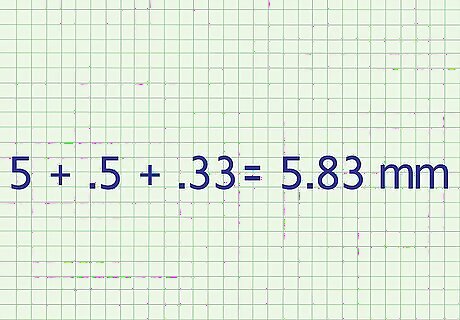
Add up all three lines. In this example, add 5 + .5 + .33. The measurement is 5.83 mm.
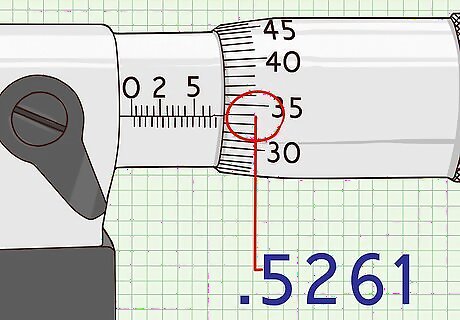
Add the thousandths. If the thousandths read a 6, then at .006 to the measurement. In this example, it would be 5.836 The main time you should incorporate the thousandths measurement is if the object has less tolerance for the pressure applied by the micrometer.













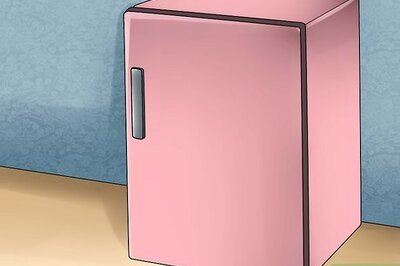






Comments
0 comment